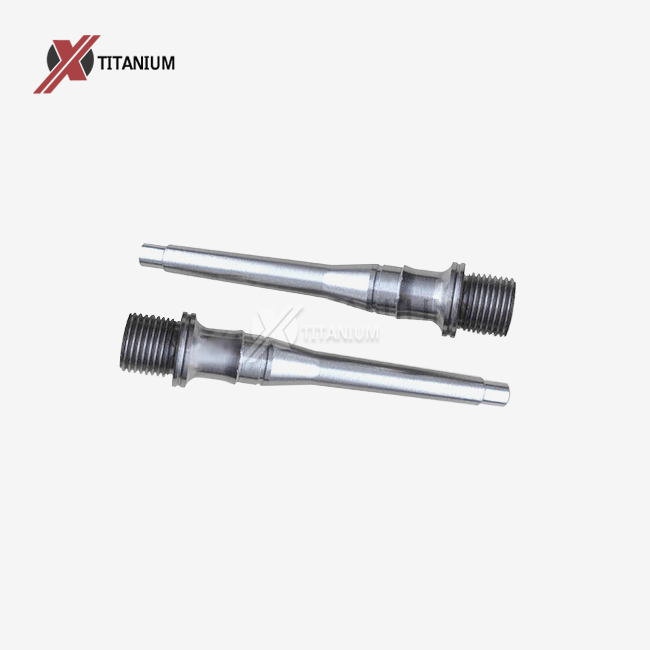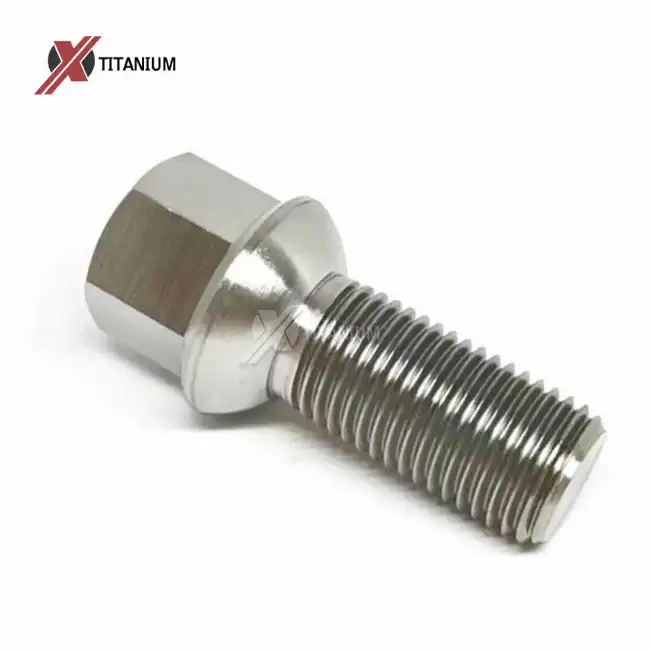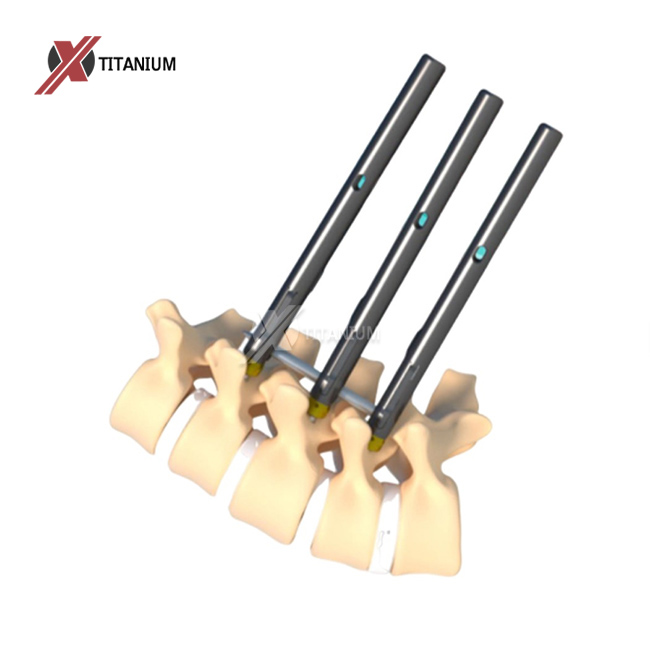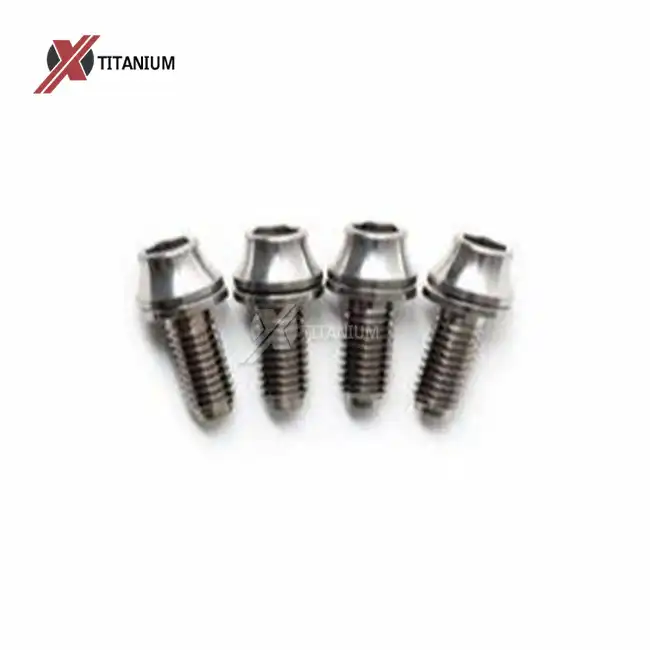The Advantages of Gr5 Titanium Pedal Spindles in Cycling
Gr5 titanium pedal spindles have revolutionized the cycling industry, offering a perfect balance of strength and weight savings. These components are crafted from Ti-6Al-4V alloy, which boasts an impressive tensile strength of 900 MPa and a minimum elongation of 10%. This combination of properties makes Gr5 titanium pedal spindles ideal for both professional cyclists and enthusiasts seeking to optimize their riding experience.
The lightweight nature of titanium contributes significantly to overall bike weight reduction. By incorporating Gr5 titanium pedal spindles, manufacturers can shave off precious grams without compromising on structural integrity. This weight reduction translates to improved acceleration and easier climbing, giving riders a competitive edge in races or a more enjoyable recreational experience.
Moreover, the corrosion resistance of Gr5 titanium pedal spindles ensures longevity and reliability in various environmental conditions. Whether exposed to sweat, rain, or road grime, these spindles maintain their structural integrity and aesthetic appeal. This durability factor is particularly appealing to cyclists who frequently ride in challenging weather conditions or participate in multi-day events.
Customization and Performance Tuning
One of the key advantages of Gr5 titanium pedal spindles is their customizability. Manufacturers can tailor the dimensions and specifications to meet specific project requirements, allowing for optimized performance across different cycling disciplines. For instance, road cyclists might prefer a slightly different spindle design compared to mountain bikers or BMX riders.
The malleability of titanium also allows for intricate designs that can enhance pedal engagement and power transfer. Some manufacturers incorporate unique textures or patterns on the spindle surface to improve grip and reduce the likelihood of foot slippage during intense riding sessions.
Gr5 Titanium Pedal Spindles in Motorsports: Driving Innovation
The motorsports industry has embraced Gr5 titanium pedal spindles as a crucial component in high-performance vehicles. These spindles play a vital role in the intricate pedal systems of race cars, contributing to both driver comfort and vehicle performance. The lightweight properties of titanium are particularly valuable in an industry where every gram counts towards achieving faster lap times.
Racing teams utilize Gr5 titanium pedal spindles to reduce the overall weight of the pedal assembly, which in turn decreases the moment of inertia. This reduction allows for quicker pedal response, enabling drivers to make split-second adjustments crucial in competitive racing scenarios. The high strength of Ti-6Al-4V alloy ensures that these spindles can withstand the extreme forces exerted during aggressive acceleration, braking, and cornering maneuvers.
Furthermore, the excellent fatigue resistance of Gr5 titanium pedal spindles contributes to the longevity of critical components in race cars. This durability is essential in endurance racing events where reliability is as important as speed. The corrosion resistance of titanium also proves beneficial in protecting these crucial parts from the harsh environmental conditions often encountered in motorsports, including exposure to various fluids and high temperatures.
Advanced Manufacturing Techniques
To maximize the potential of Gr5 titanium pedal spindles in motorsports, manufacturers employ advanced CNC machining techniques. This precision manufacturing process allows for tight tolerances and complex geometries that can be optimized for specific racing applications. Some racing teams even collaborate with titanium specialists to develop proprietary spindle designs that give them a competitive advantage on the track.
Surface treatments such as nitriding are often applied to Gr5 titanium pedal spindles in motorsports applications. This process enhances the surface hardness and wear resistance of the spindles, further extending their lifespan and maintaining optimal performance throughout grueling race seasons.
Aerospace and Medical Applications of Gr5 Titanium Pedal Spindles
The aerospace industry has long recognized the value of titanium alloys, and Gr5 titanium pedal spindles have found their way into various aircraft control systems. These components are crucial in applications where weight savings directly translate to fuel efficiency and increased payload capacity. The high strength-to-weight ratio of Ti-6Al-4V makes it an ideal material for pedal spindles in both commercial and military aircraft.
In aerospace applications, Gr5 titanium pedal spindles are often subjected to rigorous testing and certification processes to ensure they meet the stringent safety standards of the industry. The material's resistance to fatigue and corrosion is particularly valuable in this context, as it contributes to the overall reliability and longevity of critical flight control components.
The medical field has also embraced Gr5 titanium pedal spindles, particularly in the development of advanced prosthetics and rehabilitation equipment. The biocompatibility of titanium makes it an excellent choice for components that may come into contact with the human body. Prosthetic limbs often incorporate titanium spindles in joint mechanisms, providing patients with lightweight, durable, and high-performance artificial limbs.
Innovations in Biomedical Engineering
Researchers and biomedical engineers are continually exploring new ways to leverage the properties of Gr5 titanium in medical devices. Some cutting-edge applications include the development of exoskeletons and powered orthotics that utilize titanium spindles in their joint mechanisms. These advanced devices aim to improve mobility and quality of life for individuals with various physical disabilities.
The ability to anodize Gr5 titanium pedal spindles in various colors (such as gold, blue, green, purple, black, or even rainbow hues) has also found applications in medical devices. This feature allows for color-coding of components, improving ease of assembly and maintenance in complex medical equipment.
Conclusion
Gr5 titanium pedal spindles have proven to be versatile components with applications spanning multiple industries. From enhancing cycling performance to improving race car responsiveness, and from advancing aerospace technology to revolutionizing medical devices, these high-performance components continue to drive innovation across diverse fields.
As manufacturing techniques evolve and new applications emerge, the demand for Gr5 titanium pedal spindles is likely to grow, further cementing titanium's role as a critical material in high-performance industries. For more information about Gr5 titanium pedal spindles and other titanium products, please contact Baoji Chuanglian New Metal Material Co., Ltd. at info@cltifastener.com or djy6580@aliyun.com.




